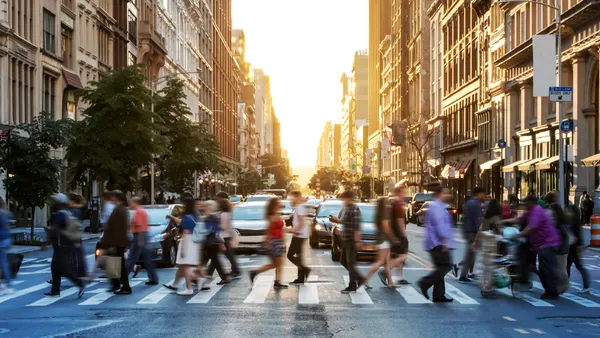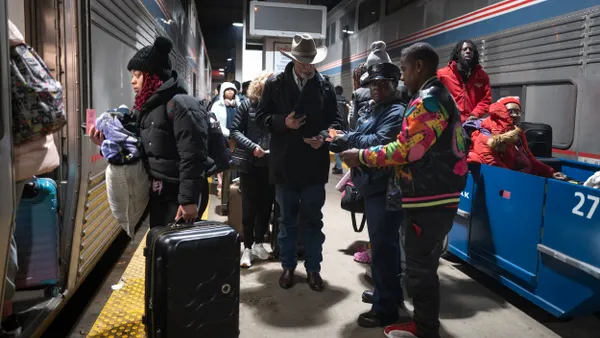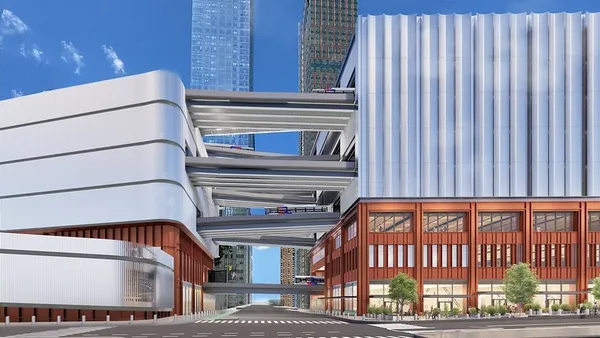Editor's Note: The following is a guest post from David Roberts, CEO of Verra Mobility.
In the midst of a global pandemic, we're facing a myriad of challenges the modern world has never experienced.
For the first time in 100 years, travel and commutes for most non-essential employees have come to a halt. The only time in the past 20 years we’ve dealt with anything close to this was after 9/11, when airline travel was shut down for weeks — leaving roads traveled more frequently.
There are some benefits to decreased travel, but they come at the very high cost of long quarantines and a stifled global economy. For example, Los Angeles has seen a 20% improvement in air quality from reduced travel emissions. Critical first responders and urgent life-saving deliveries can now be made more easily, but how do city governments ensure air quality doesn't decline as life post-COVID-19 slowly returns?
Our world will likely never really return to normal after this. Working from home may prove more beneficial, thereby reducing the number of commuters on our roads. But as cities continue to grow, they will look for ways to become smarter and more efficient. Part of this will be aimed at solutions to positively offset climate change.
According to Texas A&M's 2019 Urban Mobility Report, the average U.S. commuter spends an extra 54 hours trapped in congested traffic annually. While this statistic is alarming, more concerning is the gridlock traffic congestion snarling major metropolitan areas while also driving up greenhouse gas emissions.
An alternative solution for the future of our environment
When commuters are traveling to work again and more people are flocking to large cities, how can transportation leaders ensure congestion remains at bay? Many cities across the country are considering a new, radically simple solution to reduce the number of cars on the road: congestion pricing.
Congestion pricing is essentially a tax on drivers entering a city's busiest streets during rush hour, with the fee motivated by market demand and a driver’s desire to avoid traffic. The practice already works in many cities around the world, including Singapore, London and Stockholm, while metropolitan hubs like New York are also looking into the solution.
New York's proposed congestion pricing program is projected to generate approximately $1 billion annually, which would help to cover the costs of needed subway and road repairs. However, at this point, implementing congestion pricing is at least a year out with the implementation plan delayed by the COVID-19 pandemic.
The biggest hurdle to implementing a congestion pricing solution is securing public approval. It is common for the public and elected officials to oppose its implementation, especially due to concerns of its impact on lower-income commuters.
While no one likes paying more for commutes, a "convenience tax" is already a concept that most Americans are accustomed to paying. For example, we’re willing to pay a premium for streaming subscription services to avoid waiting through 30 second commercial breaks.
We already have the technology to implement congestion pricing in cities that need a traffic management solution. Automated License Plate Recognition (ALPR) technology is used throughout the country to assist law enforcement in matching vehicles to various crimes, while cameras and RFID technology are being used to streamline traffic on our nation's toll roads — some of which utilize this tech to apply variable pricing based on real-time traffic conditions.
These systems connect with pre-registered accounts or send a bill directly to the vehicle's owner. Congestion pricing would be similar: drivers who enter a pre-determined congestion zone would be charged a pre-determined fee.
Though each of the global congestion pricing program models in place currently offer different pricing structures, the results are consistent — a dramatic reduction in traffic and improvement in air quality. There is opportunity for American metro areas to create their own unique but equally successful congestion pricing system to help make cities smarter and our world more efficient.









